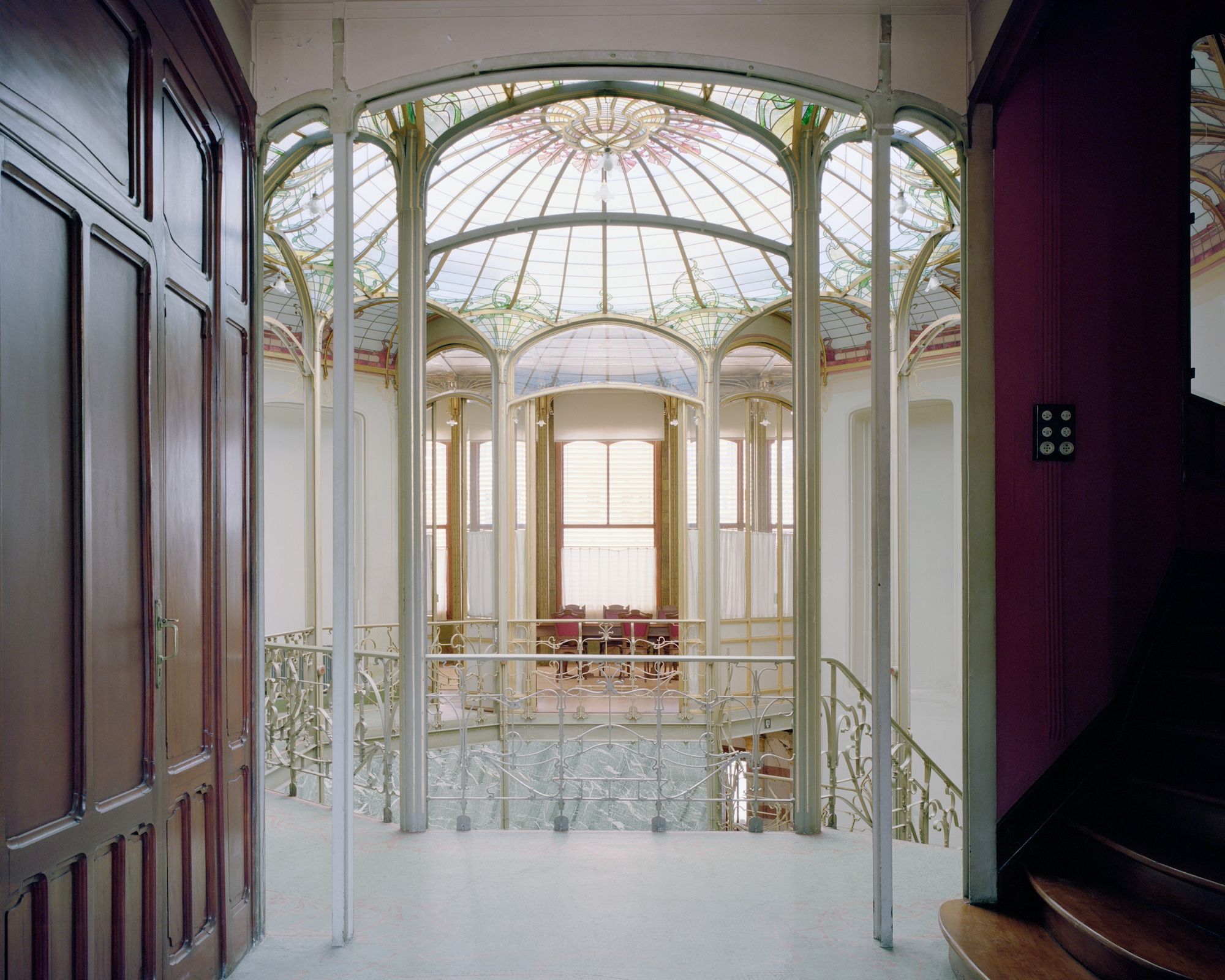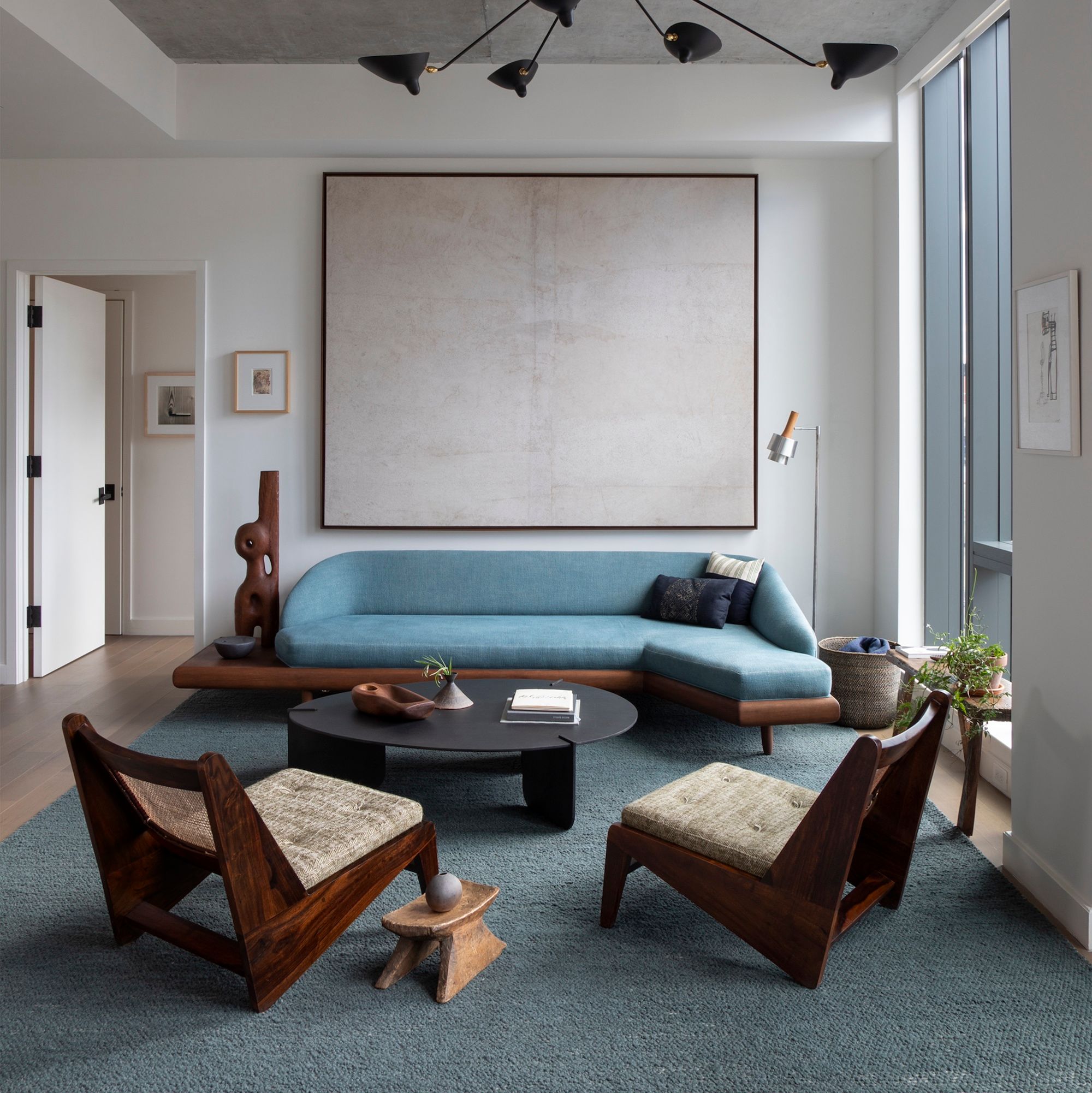DESIGN LEGENDS MARCH 8 2023
by Daniella Ohad
Design doyenne Daniella Ohad recaps her weekly conversations with the legends of design

FRANCO AUDRITO, FOUNDER OF STUDIO65 AND SELF-PROCLAIMED MERCHANT OF CLOUDS, SITTING ON HIS ICONIC BOCCA SOFA
Photo © Studio65
Daniella OhadhostsMaterials and Furniture: The Legends, a virtual program presented in partnership with Christie’s Education, comprising one-on-one interviews with the world’s most admired designers. For the Design Miami/ Forum, Ohad shares highlights from each conversation. This week her subject is Franco Audrito of Studio65.
“Franco Audrito, founder of Studio65, was part of a small faction of youth who built a movement by believing they could change the world—not through politics or war, but through architecture and design. Protesting events like the Vietnam War could be achieved simply by sitting on Audrito’s undulating Leonardo sofa, hand painted with stars and stripes to symbolize the American flag. What he brings to any design is passion and humor; two things, if integrated into our society today, could, in fact, help change the world.” —Evan Snyderman, Principal of R & Company and publisher of SuperDesign: Italian Radical Design, 1965-1975

STUDIO65/ LEONARDO SOFA FOR GUFRAM
Photo © Gufram
Throughout his six-decade career, Franco Audrito—my most recent Materials and Furniture: The Legends guest—has never stopped dreaming big and striving for a better tomorrow. At 80 years old, he is as kind, funny, and engaged as ever—just as he was when he founded the radical, utopian collective Studio65 (Studiosessanta5) while studying at the Faculty of Architecture in Turin in the 1960s.
Audrito’s natural charisma no doubt inspired other young, like-minded activists, artists, and architects—including his partner Nanà Sampaniotou—to join him in establishing what would become known as Italy’s transformative Anti-Design movement. Together, the members of Studio65 created some of the most iconic designs of the 20th century, including the Leonardo, Bocca, and Capitello collections, and left an indelible imprint on design culture that is felt to this day.
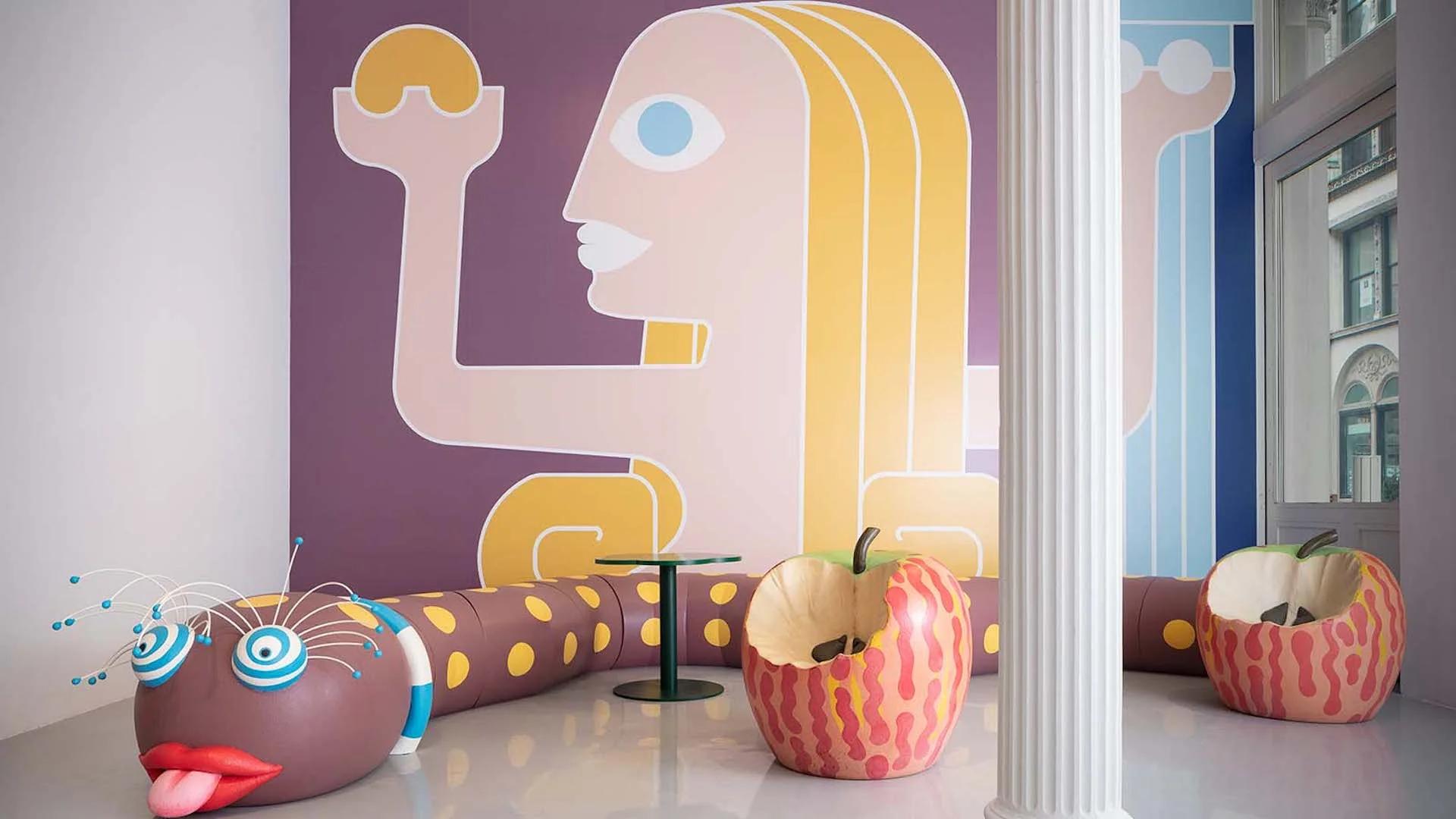
MELA MORSICATA, A STUDIO65 SOLO EXHIBITION, ON VIEW AT R & COMPANY IN NEW YORK IN 2020
Photo © R & Company
During our conversation, Audrito cited two heroes who greatly influenced his work, both fellow Italians: philosopher-writer Umberto Eco (1932–2016) and architect-designer Carlo Mollino (1905–1973). Like Audrito himself, Eco and Mollino were sui generis thinkers who originated paradigm-shifting forms in their respective fields.
It was Eco’s Gruppo 63, a literary movement aimed at defying traditional Italian cultural conventions, that inspired the name Audrito chose for his own defiant collective. Mollino, meanwhile, was Audrito’s professor and an important supporter of Studio65’s mission as well as the wider Anti-Design movement that swept across Italy and beyond in the 1960s and 70s.
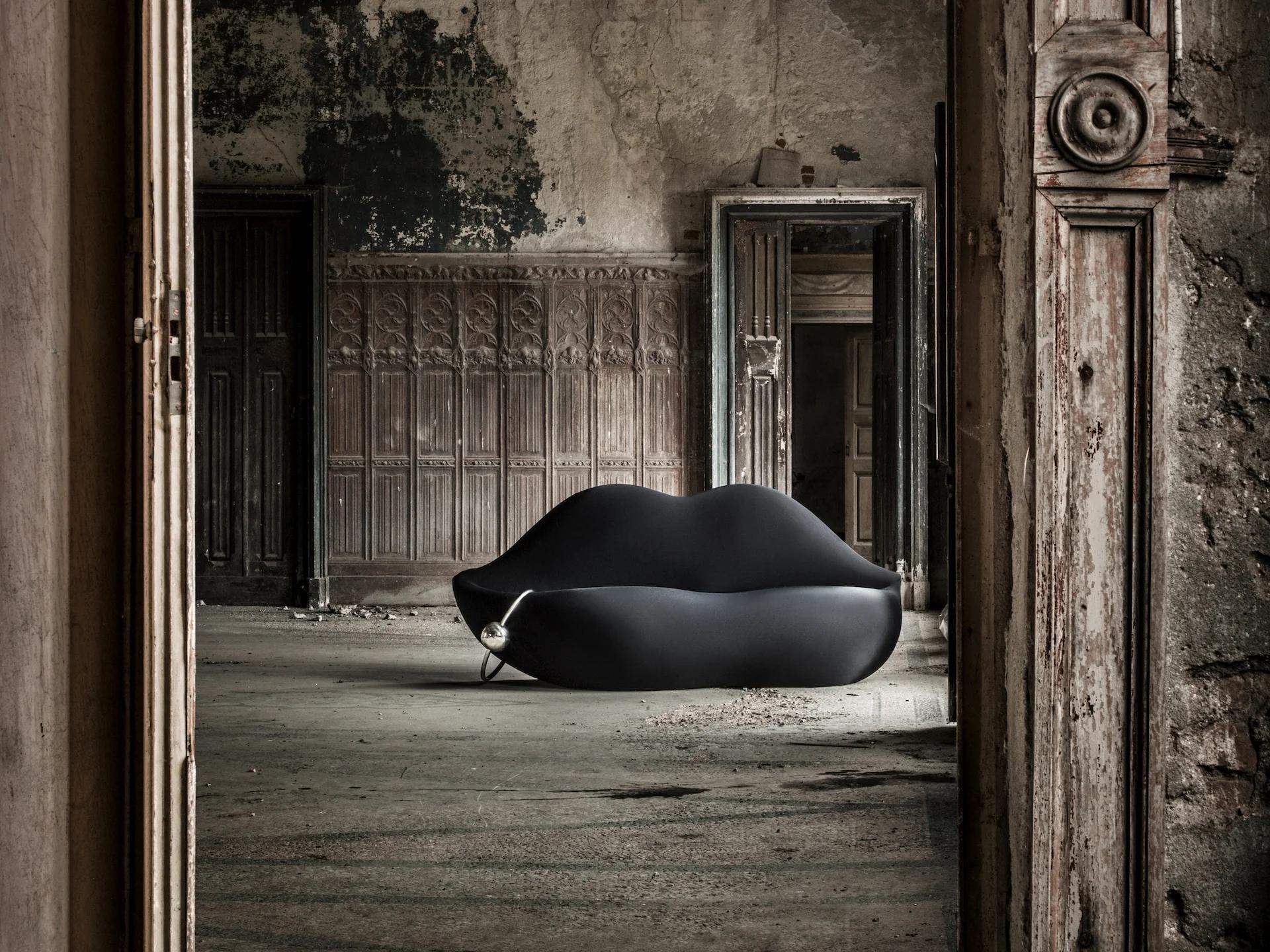
STUDIO65/ BOCCA DARK LADY (2020 EDITION) FOR GUFRAM
Photo © Gufram
Audrito wields his warm yet subversive spirit to communicate political and social critiques through the humorously iconoclastic designs he creates with his studio. His forms are often inspired by vanguard art movements, like Futurism, Surrealism, and Pop Art, while his messages are invariably about championing everyday people, especially downtrodden working class and immigrant communities. He called himself the “Plebeian Architect,” referencing the commoners of ancient Rome.
Design, for Audrito, should not reinforce the status-quo or polite notions of good taste. Instead, he approaches the discipline as a vital tool for changing the world, especially when coupled with innovative technologies. In the 1960s and 70s, Studio65 embraced the aesthetic freedom offered by polyurethane—at the time, a brand new moldable material, capable of taking just about any shape, requiring no underlying structure, and limited only by the designer’s imagination.
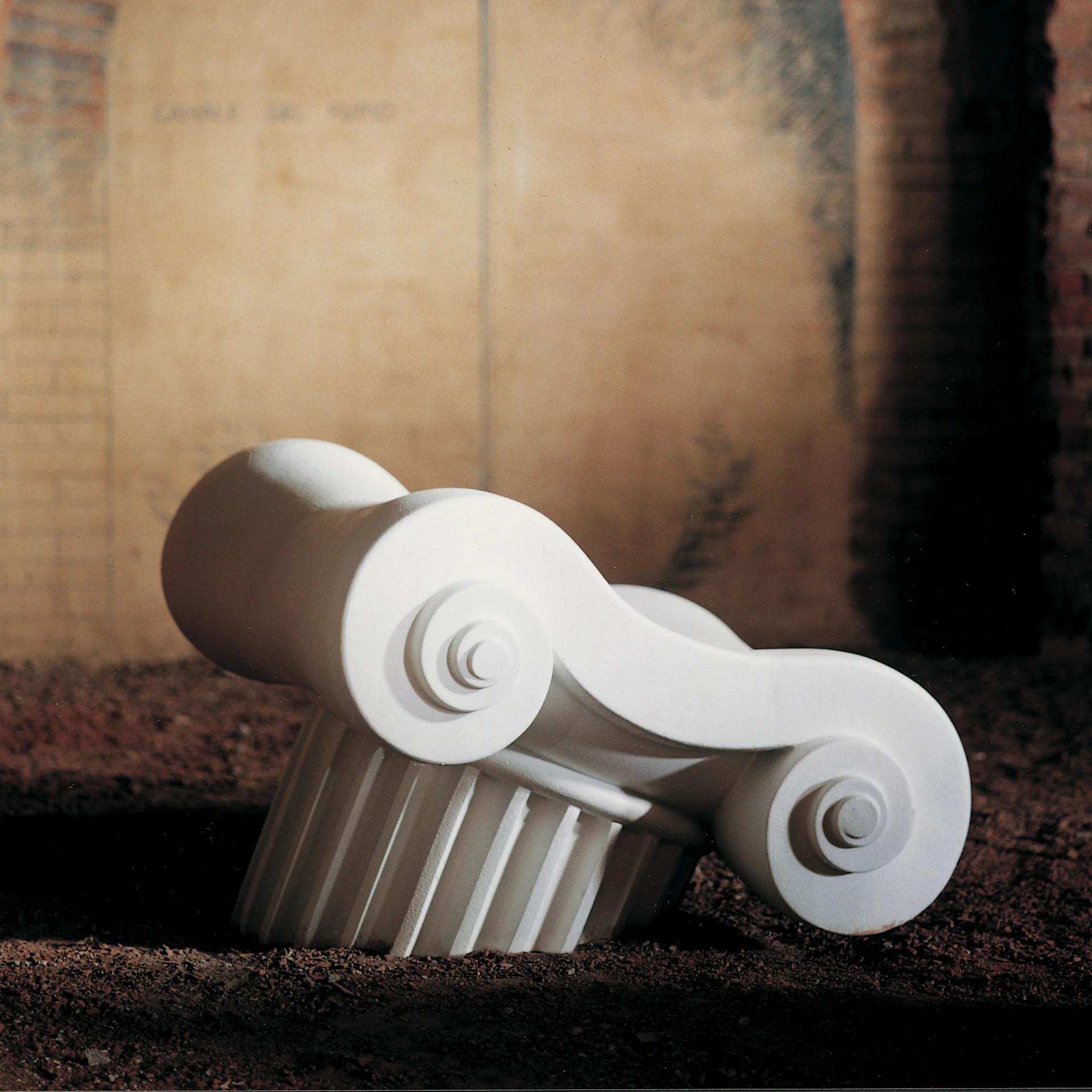
STUDIO65/ CAPITELLO FOR GUFRAM
Photo © Gufram
Studio65’s most famous polyurethane furniture designs were originally conceived as one-offs before Italian brand Gufram put them into commercial production. The Leonardo, for example, was designed by Audrito and his wife for their own home in 1969, the couple’s first design collaboration. The modular sofa’s stars-and-stripes motif was chosen to celebrate freedom as well as condemn the Vietnam War, the Nixon administration, and American imperialism.
The Capitello’s first incarnation, in contrast, was intended for a public audience from the start, designed for a competition hosted by Dupont in 1971; surprisingly, it didn’t win. Barely recognizable as the chair that it is, this tongue-in-cheek provocation reappropriates an ancient Greek, Ionic capital, rendering the traditionally marble form in pliable polyurethane foam.
Studio65’s timeless, lip-shaped Bocca sofa came to life through a project that exists today only through archival photographs, a three-story gymnasium in Milan called Contourella. Sensual, colorful, and edgy, filled with oblique references to Turkish and Roman bathhouses, this fantastical gesamtkunstwerk was commissioned in 1970 by art collector Marilyn Garosci (who, it is said, loved to wear lipstick). It was a dream project, Andrito told us, for a young architect fresh out of school. A riff on Salvador Dali’s 1930s collage of Mae West’s face as an apartment interior, the first Bocca was installed in the gymnasium’s entrance as an ode to the goddess of beauty.
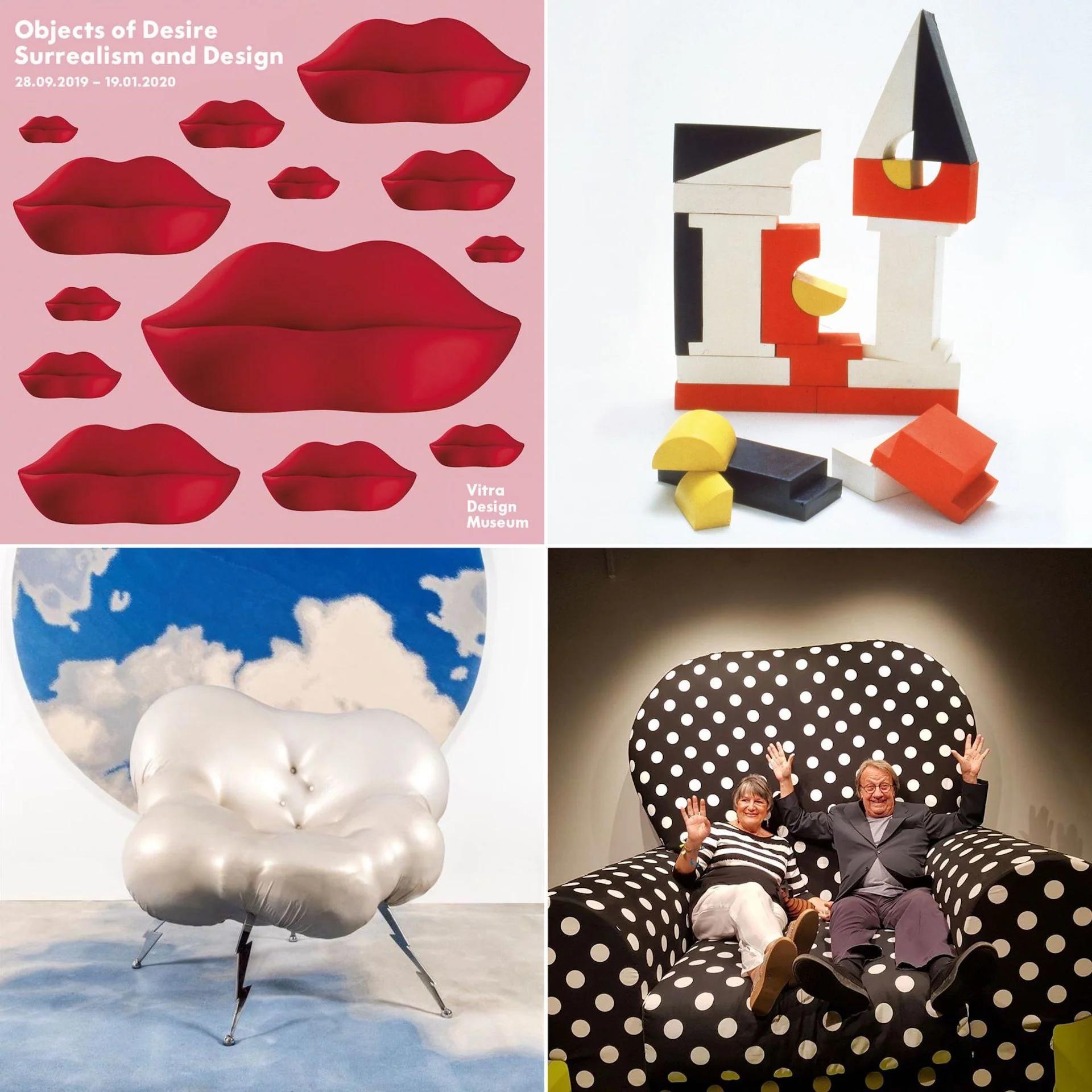
THE WORK OF STUDIO65: BOCCA SOFAS ON THE COVER OF VITRA DESIGN MUSEUM'S OBJECTS OF DESIRE CATALOGUE | BABY-LONIA TOYS | ZOT CHAIR | NANÀ SAMPANIOTOU AND FRANCO AUDRITO SITTING ON THEIR MICKEY DEI SOGNI ARMCHAIR
Photos © Studio65
In Italy in the 1960s and 70s, Studio65 was not alone in their quest for design revolution. The Anti-Design movement encompassed a number of visionary collectives and practitioners, including Archizoom, Superstudio, Gruppo Strum, 999, and Studio Alchimia, all of whom questioned the past and the failures of modernism while promoting a more utopian future and a more inclusive built environment. Some of these groups attained greater fame, but none have endured longer than Studio65. As others disappeared or pivoted their purpose, Audrito and Studio65 kept going. Sixty years later, the collective continues to design politically charged, dream-like spaces and objects, working from offices in both Turin and Riyadh.
During the World Expo in Milan in 2015, Studio65 was honored with a monographic exhibition at Fondazione Torino Musei, curated by Maria Cristina Didero. The title chosen was Merchant of Clouds, a moniker that Audrito has frequently claimed to describe his work. To Audrito, the show represented a long-sought moment of affirmation—a gratifying acknowledgement of the values that he has alway fought for and his determination to remain authentic. The show, he said, was a demonstration to younger designers that one should never compromise for the sake of the market or worldly success. Dignity and quality come first, even for a life-long provocateur.
“Franco Audrito is a true radical,” Charley Vezza, Gufram’s Global Creative Orchestrator, told me. “He has always been true to himself—in his designs, his furniture, and his architecture. A lover of beauty in all its forms, he always tells the truth, his truth. He likes to call himself a Merchant of Clouds, and indeed that is what he sells. Every encounter with him leaves you in a magnificent dream state. Reality, for Franco, exists only in dreams.” ◆
You can attend live Materials and Furniture: The Legends webinars by registering here. The program runs through May 10, 2023.
